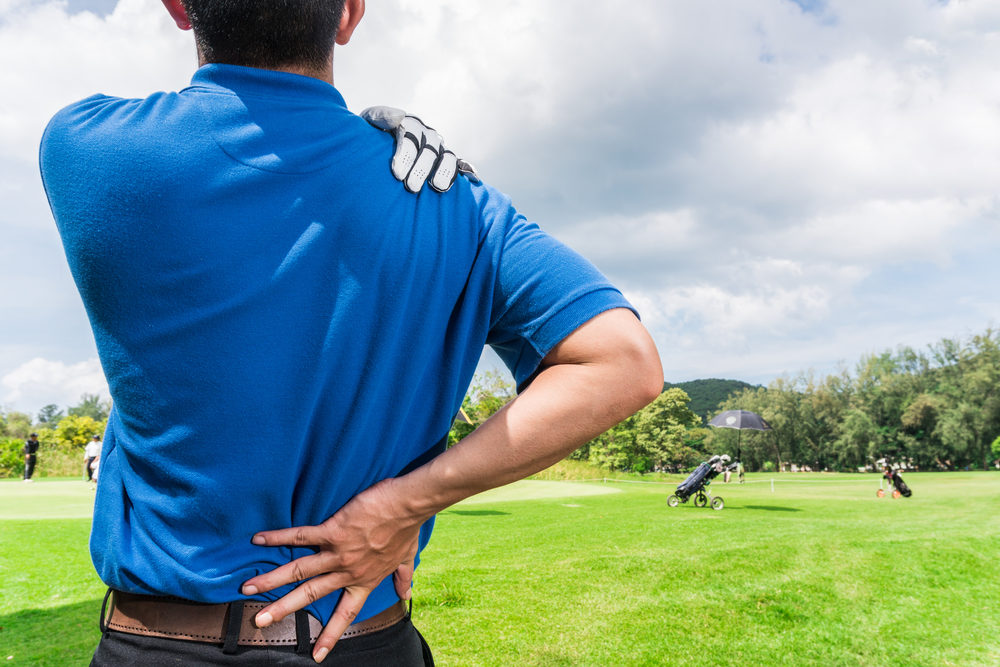If you felt a twinge after that last swing, learn how to fine-tune your form and prevent rotator cuff injuries.
Shoulder pain is unfortunately common for golfers of all levels, and is often related to overuse of the rotator cuff muscles. These muscles, and the attached tendons, cover the ball of the humerus within the shoulder socket, stabilizing the joint and facilitating its range of motion.
Repeated golf swings, especially with improper form, can wreak havoc on the rotator cuff. Over time, the tendons begin to detach from the humerus, fraying or fully tearing, and can cause significant pain. Here’s how to avoid rotator cuff injuries so you can keep your shoulder — and your golf game — in top shape.
WHAT IS A ROTATOR CUFF TEAR?
Rotator cuff tears can be caused by impact or trauma, but for most golfers they are associated with overuse. The rotator cuff muscles are responsible for moving the shoulder through golf swings, and repeated motions can wear down the joint over time, especially in the dominant arm.
Amateur golfers may be injured because they fail to condition or warm up, or don’t use proper form. Pro golfers are also likely to deal with shoulder pain, thanks to the sheer number of swings they take each day.
Aging is another common cause of rotator cuff tears, as the tendons naturally wear down over time. As we age, there is a less robust blood supply to the area, and the body may not repair as quickly, which can lead to tears. This means that people over 40 are at an increased risk for injury. Your acromion (a bony process on the shoulder blade) may also develop bone spurs, which can cause an impingement as the spurs weaken the rotator cuff tendon.
Gradual pain in the shoulder or upper arm is often the first sign of a rotator cuff injury. Or, in the case of a tear due to trauma, you’ll feel immediate and intense pain and weakness. In either case, look out for pain when you raise your arm overhead, or pain that makes it difficult to sleep comfortably. If you continue to play golf without addressing these symptoms, you may end up with persistent pain and weakness, as well as a limited range of motion that affects your game.
HOW GOLFERS CAN AVOID PAIN
Some simple changes can help both pro and amateur golfers keep their joints healthy. To start out, be sure not to carry your golf bag on a sore shoulder. If you feel any type of shoulder pain, especially while playing, you should stop and consult a doctor before returning to the green.
Proper equipment and technique are key to preventing injury. Before you get on the course, make sure you’ve had your golf clubs fitted for length and weight, as longer clubs may be easier on your arms. To prep for a game or a day at the driving range, use targeted exercises to condition your muscles, especially those in the shoulders, back, and chest.
As you play, take a moment to examine your form. Turning your body as you swing may feel counterintuitive, but it can help prevent shoulder pain, as a full body swing uses the strength of the larger muscles in your legs, hips, and torso rather than relying solely on your shoulders. Use your back to swing your arms, instead of your shoulder muscles, and stop the swing when your body has finished turning. As you follow through on the swing, don’t extend your shoulders more than necessary. If you do feel pain in your shoulder, some trainers suggest keeping a rolled towel under your arm to make sure you keep your elbow close to your torso.
TREATMENT OPTIONS
In many cases, rotator cuff tears can be easily avoided. But if you’ve already experienced a painful tear, don’t expect the problem to resolve own its own. First, refrain from golfing and other activities that cause the pain to worsen. Then try icing the area and taking anti-inflammatory medication, which can help provide relief. Your orthopedic specialist may also recommend a physical therapy program to strengthen the surrounding area, along with steroidal injections.
Older and non-active patients may not require surgery, as they can often regain range of motion through physical therapy. Athletes, however, may need arthroscopic surgery to ensure they can continue to use the shoulder for their sport. After the procedure, your shoulder will not be completely healed for about six months, but physical therapy can begin within six weeks.




